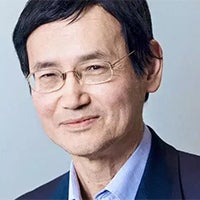It is likely that very few of the 60 million U.S. citizens who voted for Donald Trump would have done so because of his stance on terrorism insurance. Only because terrorism insurance is too arcane an issue to have come up in the presidential debates. However, many of the nation’s wavering voters may have been swayed by his pledge to make America safer from the scourge of terrorism. Under his presidency, border security will surely be tightened – even if no frontier wall is ever built and changes made to entry decisions for Syrian Muslim refugees into the United States.
Reauthorization of TRIA – Talks Start in 2018
On January 12, 2015, the Terrorism Risk Insurance Program Reauthorization Act of 2015 was signed into law by President Obama. This third extension of the original 2002 Terrorism Risk Insurance Act (TRIA) will sunset at the end of 2020, coinciding with the end of the first term of the Trump presidency. In the drafting of the 2015 reauthorization bill, detailed consideration was given by the House Financial Services Committee to alternative wordings that would have reduced the coverage provided by the U.S. government insurance backstop. One such alternative would have focused U.S. government involvement in the terrorism insurance market on covering terrorism losses from extreme attacks using weapons of mass destruction. When the future of terrorism risk insurance is raised once more on Capitol Hill in 2018, the Republican White House and Congress are likely to seek to further extend the private terrorism insurance market. Though I consider this to be contingent on President Trump keeping his pledge to keep America safe until then.
Balancing Civil Liberties in the Face of Reducing Terrorism Risk
In the democracies of the western alliance, the balance of keeping people safe from terrorism and preserving civil liberty is much debated issue. After the July 2005 London Transport bombings, the head of the British security service, MI5, warned that ‘there needs to be a debate on whether some erosion of civil liberties may be necessary to improve the chances of our citizens not being blown apart as they go about their daily lives’. On a national scale across America, a similar debate was prevalent during the 2016 U.S. presidential election. It may seem that in this instance, the champion of civil liberties, minority rights, and political correctness lost to the conservative advocate of oppressive counter-terrorism action and profiling of terrorist suspects.
Regardless of who occupies the White House, however, terrorist plots against the U.S. will persist and terrorists must be stopped before they move to their attack targets. Success in interdicting these plots depends crucially on intelligence gathered from electronic surveillance. It is well-documented that more intrusive surveillance can successfully increase the chances of lone wolf plots being stopped. And President-elect Trump has already affirmed his readiness to authorize more surveillance. He can claim a public mandate for this: for America to be great again, it has to be safe again – even from lone wolf terrorist plots. After the Orlando nightclub attack on June 12, 2016, perpetrated by the radicalized son of an Afghan immigrant, Donald Trump said that ‘we cannot afford to be politically correct anymore’. And in fighting global Islamist extremism vigorously, he may be able to count on President Putin’s support. While the two world leaders differ on geopolitics, their mutual respect as a President may be maintained through abrasive counter-terrorism action.
When Michael Chertoff was appointed Secretary of Homeland Security, President George W. Bush told him not to let 9/11 happen again – and he didn’t. President-elect Trump will expect a similarly impressive clean sheet. On a more personal level he also has a special interest in increased security against terrorist attacks. His own real estate empire includes some notable potential terrorist targets, including high-profile landmark buildings bearing his name. While the New York Stock Exchange has too tight security to be attacked, in contrast, the Trump Building on Wall Street has easy public access. There are numerous opportunities for terrorist target substitution.






